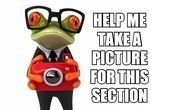Biochemical Tests and Chromatography
Edited by Jamie (ScienceAid Editor), Taylor (ScienceAid Editor)
On this page are a number of techniques that you can use in Biology to identify what something is.
Biochemical Tests
These tests can be used to identify different type of biological molecule, it can be identified by colours.
| Reducing Sugars | Add Benedict's solution to the sample.
Heat this in a beaker of boiling water. After a few minutes it should turn brick red for a positive result. Reducing sugars include glucose, lactose and maltose. |
| Non-Reducing Sugars | Boil the sample with hydrochloric acid.
After a few minutes add an alkali to neutralize it. Add a few drops of Benedict's solution and boil again for a few minutes. For a positive result it will turn brick red. Non-reducing sugars include sucrose. |
| Starch | Simply add a few drops of Iodine to the sample.
It will turn blue/black if there is starch present. |
| Lipids | This is known as the Emulsion Test.
Since lipids don't dissolve in water but do in ethanol. Dissolve the sample in ethanol and shake. Decant this into water so anything undissolved is left. If there is any lipid then it will precipitate in water as it is insoluble in this solvent. |
| Protein | Known as the Biuret Test.
Add a good amount of biuret solution and shake. If there is protein present (or more specifically peptide bonds) then the solution turns lilac-purple. |
Chromatography
Chromatography is a method used to separate a substance from a mixture and is based on the fact that different substances have different solubilities. For this process a chromatography tank must be used. This has a reservoir of solvent (water, ethanol, propanone) at the bottom.
A drop of the mixture to be separated is put onto chromatography - filter paper. This is the origin. This sheet is then placed in the sealed tank with the bottom part below the origin, touching the solvent. The solvent will travel up the paper, taking the substance with it. A typical chromatogram looks like this:
An indicator can be used to identify the relevant substance. The distance travelled by the spot - divided by distance moved by solvent - gives the Rf value. This can be looked up and used to identify the substance.
Two-Way Chromatography
If, once you do the chromatography, then the Rf value could be a 2 or more things, you need to do further analysis. As shown diagrammatically below, the paper is rotated on its side and a different solvent is used. The Rf values for this solvent can be calculated, and with that you can identify the substance.
Referencing this Article
If you need to reference this article in your work, you can copy-paste the following depending on your required format:
APA (American Psychological Association)
Biochemical Tests and Chromatography. (2017). In ScienceAid. Retrieved Apr 23, 2024, from https://scienceaid.net/biology/biochemistry/tests.html
MLA (Modern Language Association) "Biochemical Tests and Chromatography." ScienceAid, scienceaid.net/biology/biochemistry/tests.html Accessed 23 Apr 2024.
Chicago / Turabian ScienceAid.net. "Biochemical Tests and Chromatography." Accessed Apr 23, 2024. https://scienceaid.net/biology/biochemistry/tests.html.
If you have problems with any of the steps in this article, please ask a question for more help, or post in the comments section below.
Comments
Article Info
Categories : Biochemistry
Recent edits by: Jamie (ScienceAid Editor)










